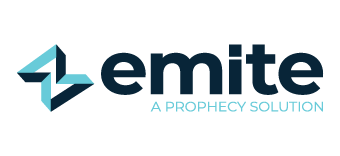How Multi-Dimensional KPI’s are Transforming Contact Center and Business Operations
How do you measure effectiveness and efficiency in your contact center? Or even in your organization? I ask these questions every single day to our customers and the answers that I receive back are always very different.
The truth is, there is no one answer. There is no silver bullet for measuring how effective a contact center is at achieving its operational goals. It depends on multiple factors that differ based on industry vertical and customer needs.
Analyzing these multiple factors using KPIs (Key Performance Indicators) is a great start. A KPI is a measurable value that demonstrates how effective a contact center is at achieving its key business objectives. But in order to define and measure a KPI, you first need to have access to the relevant underlying data.
The great news is that data is plentiful. So much data is available these days from various platforms and systems, but the bad news is that data is often locked-down and isolated in its presentation.
You can have the best contact center solution in the world, yet it only presents you with siloed contact center specific dashboards and reports. What about your organization’s sales data, product data, ticketing data, headset data, etc…? Where is all this information stored? Can it be accessed, aggregated and correlated with your contact center data? Are you able to create KPI’s that span multiple data sources, providing better insight into what is going on in your organization?
The answer is… yes you can.
Too often we see companies that measure their customer experience using surface-level KPIs such as ASA (Average Speed of Answer) or GoS (Grade of Service). While these default KPIs are important to monitor, they don’t always align with company objectives and focusing on them can obfuscate the richer story unfolding in the data. Leveraging custom KPIs that are aligned with organizational goals increases the likelihood of achieving real-world actionable insights that actually make a difference.
A great example of this is an emite customer that uses KPIs like “Agent Revenue per Minute of Talk Time” and “Number of Sales per Call” to keep their sales teams informed and motivated. In this instance, standard contact center metrics are correlated with Salesforce revenue data to deliver real-time multi-dimensional KPI’s that engage and drive their sales teams appropriately.
Another customer considers call quality to be critically important, so they have created several cross-correlated KPIs based on acoustic incident headset data and customer survey results. Now they have insights into agent over-talk, unusual mute times, or even those cases where an agent disconnects their headset to make a customer think there is an issue with the line. By creating these KPIs from two disparate data sources, they can identify problems faster and achieve a higher customer satisfaction overall.
An IT service desk customer of emite has created what might be one of my favorite metrics. They call it the “Queue Score” and it is a weighted combination of numerous KPIs like Service Level, ASA, NPS, Ticket Resolution Time and several more to provide a single metric that scores somewhere between 0 and 10 for each of their contact center queues. It is the single most important metric to them and to be able to calculate it in real-time is invaluable in evaluating and improving their business.
Having a flexible and powerful data visualization platform like emite has empowered these organizations to elevate their contact center KPI’s and dashboards to the executive level. Being able to visualize in real-time sophisticated KPIs and metrics that correlate data from multiple data sources makes critical and actionable insight available across the business, leading to improved performance and efficiency.



